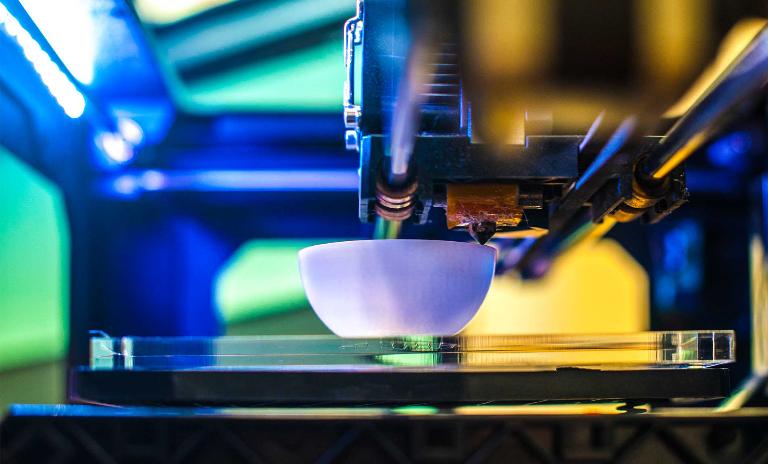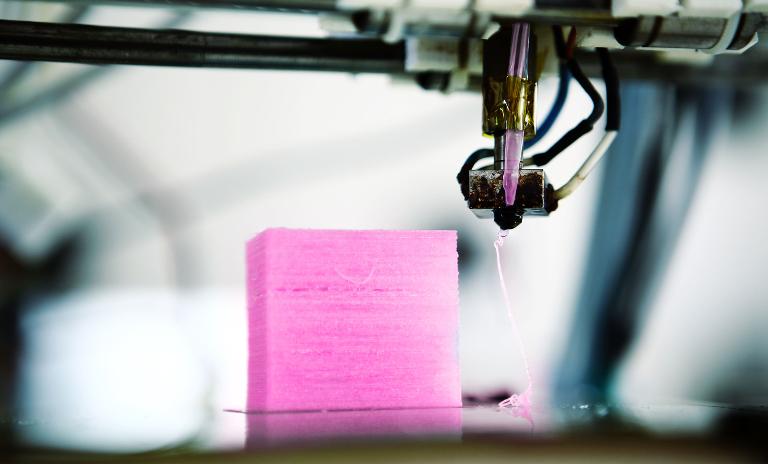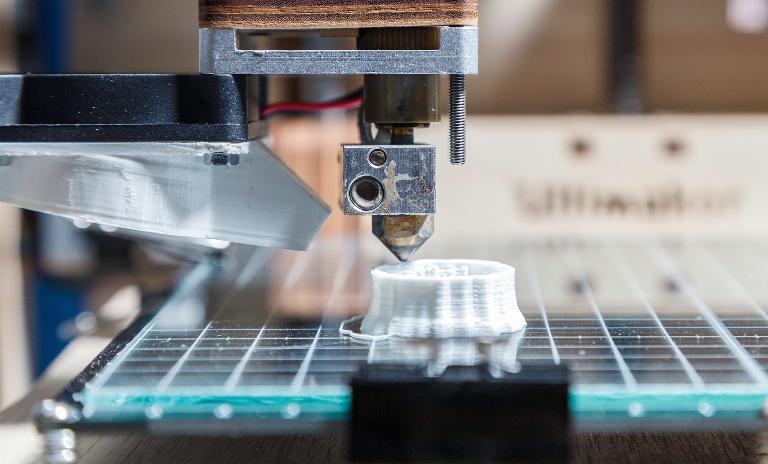" Managers can adapt defense doctrine to meet challenges in the corporate world. "



There was certainly no lack of hype in the media and on the stock exchanges in New York and Frankfurt in 2013. Since then, expectations placed on the manufacturers of 3D printers have been toned down and are more realistic. Stock prices are trading sideways at best. Forecasts still point to a fourfold increase in the market over the next decade – to eight billion euros generated by sales of plant, materials and component manufacturing.
That adds up to rapid growth from a narrow base: 3D printing machines account for less than 1.5% of the machine tool market. Yet even if the optimistic predictions come to pass, these machines are not going to replace any existing production technologies in the medium to long term.
Most promising is not the mass market for metal or plastic parts. 3D printing – production technicians speak of generative or additive manufacturing (AM) – creates significant benefits for (very) small series. It also opens the door to new business models.
The latter derives from three disruptive paths: the rapid, low-cost manufacture of individual products; new geo metries, materials and processes; and distributed production. All three will profoundly influence the production industry and both B2B and B2C business models.

"3D printing knows no economies of scale. The first component costs just as much as the hundred thousandth component."
Compared to conventional methods, AM delivers a series of advantages. The fact that the CAD data is channeled directly into the part or component leads to extremely short process chains. Relatively little investment is therefore needed to distribute production.
Batch size has no bearing on the cost of parts, which favors the production of highly specialized small series and prototypes. Nor do costs depend on geometric complexity, but are linked merely to the weight of the manufactured component. Virtually unlimited digital design options allow high-strength materials to be fashioned into new geometric forms that conventional production methods have never been able to cope with.
New component functions can thus be implemented that further reduce lifecycle costs. New repair strategies for high-value parts save time and money. Resource efficiency improves, too, as production consumes exactly the quantity of raw material that corresponds to the weight of the finished part – no more, and no less.

There are still a few clouds in the additive manufacturing sky, however. Severing the link between cost and batch size can be both a blessing and a curse. If parts that are currently rolled out in medium to large series were to be manufactured “as is” using 3D printing techniques, the unit cost would increase by a factor of between 10 and 50. The cost would quickly fall, of course, but not by enough to make up this discrepancy.
Why? Because 3D printing knows no economies of scale. The first component costs just as much as the hundred thousandth component. Better leverage can be achieved with small series and prototype production.
Robust prototypes can be rolled out overnight, without the need to procure complex tools. That shaves months off development and testing cycles in sophisticated industrial development programs. For highly customized products such as dental crowns, medical implants and even designer jewelry, 3D printing is already an established and competitive production method.
"For production purposes, additive manufacturing is the next step in the digital transformation."
If no tools are needed, industrial products can be manufactured on demand – and even outsourced to partners if necessary. 3D printers for metal components cost between 400 and 1.5 million euros, depending on the need for quality, overall dimensions and build rate. Professional systems for plastic parts production start in the tens of thousands of euros and can go up to six figures. The quality of these professional systems is vastly superior to the “home printers” that sell for a few hundred euros.
In the B2B segment, a highly specialized infrastructure has sprung up in which service providers optimize customers’ parts and handle the actual production. Web platforms such as shapeways.com and manufacturing. materialise.com also serve the B2C segment.
Using AM becomes especially lucrative where a product’s costs, such as repair costs, can be reduced over the entire lifecycle. Siemens, for example, grinds down worn out gas turbine burners and rebuilds them using additive methods.
More lightweight designs and more efficient combustion processes allow aircraft, sports vehicles and racing cars to benefit from lower fuel consumption. General Electric, for example, has improved fuel injection nozzles for use in aircraft.
Customers can offset the cost of production against the far weightier factor of fuel savings during the product lifecycle. It is therefore no surprise that all the major aviation groups are working on 3D printed components, including efficient engines with new flow properties and optimized combustion. The first series production runs are expected in 2015.

R&D departments will likewise have to adapt the way they work to this new technology. Development timelines are shrinking from months to days. Creative ideas can be implemented in short cycles. Software is becoming more important than ever – as a tool to support development and production, but also as part of the product itself. Leading German manufacturers are thus taking a close look at the creative agility with which software giants control their development processes and reduce complexity using the empirical, incremental and iterative Scrum framework.
Further new developments are conceivable: large, complex structures (aircraft wings), combinations of materials (metals and synthetics) and the combination of additive manufacturing with cutting machines (for turning, grinding and drilling). For production purposes, additive manufacturing is the next step in the digital transformation. Even as an industrialized niche technology, however, it will not lead to the demise of traditional methods.